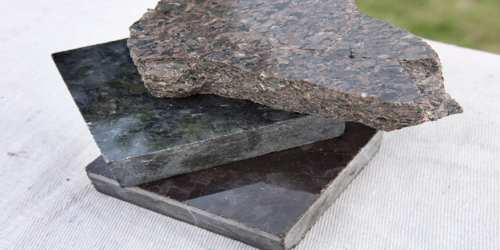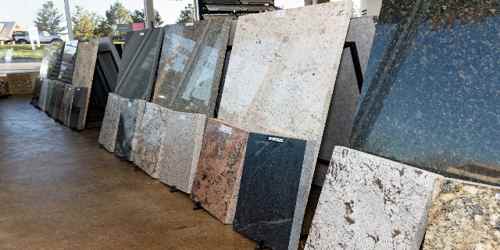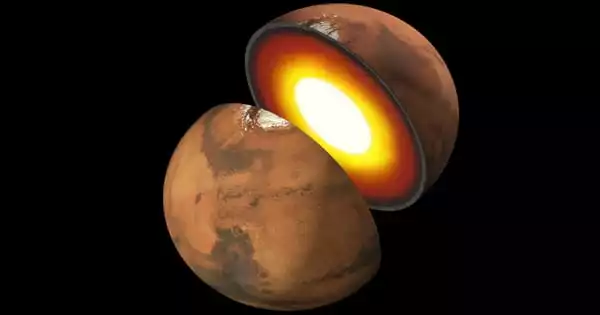Granite
Definition
Granite is a usually light-colored, coarse-grained igneous rock consisting mostly of quartz, orthoclase feldspar, sodium-rich plagioclase feldspar, and micas. This popular rock has a distinct appearance and texture in its natural state, but once it is cut and polished granite can be made as smooth as any other surface. Granite is defined as an igneous rock that has a 20 percent or higher quartz content. The natural coloring of granite is dependent on the mineralogical composition of the particular piece, but granite usually has a variation of pink or gray coloring. In its natural environment, granite is not only known for its beauty but also for its strength.

The darker minerals in granite are usually biotite and hornblende. Granite is one of the most common rocks in the crust of continents, and is formed by the slow, underground cooling of magma. Granite is composed mainly of quartz and feldspar with minor amounts of mica, amphiboles, and other minerals. This mineral composition usually gives granite a red, pink, gray, or white color with dark mineral grains visible throughout the rock.
Granite is nearly always massive (lacking any internal structures), hard and tough, and therefore it has gained widespread use throughout human history as a construction stone. The average density of granite is between 2.65 and 2.75 g/cm3 (165.4 – 171.7 lb/ft3), its compressive strength usually lies above 200 MPa, and its viscosity near STP is 3–6 • 1019 Pa·s.
Properties and Occurrence of Granite
Granite properties are essential when it comes to identification of rocks. The study of properties of Granite rock is done by Mineralogists to determine the identity of rock. Some of the properties of Granite include: Hardness, Color, Fracture, Luster, Compressive Strength etc. Granite is Large and Coarse Grained. As compared to other rocks, Granite is more porous and its density is 2.65-2.75 g/cm3. Get to know more about physical properties of Granite and thermal properties of Granite.

Granite is a plutonic rock in which quartz makes up between 10 and 50 percent of the felsic components and alkali feldspar accounts for 65 to 90 percent of the total feldspar content. Granite is also well-known from its many world-famous natural exposures. These include: Stone Mountain, Georgia; Yosemite Valley, California; Mount Rushmore, South Dakota; Pike’s Peak, Colorado; and White Mountains, New Hampshire.
Physical properties of rocks are used to identify the type of rocks and to discover more about them. There are various physical properties of Granite like Hardness, Grain Size, Fracture, Streak, Porosity, Luster, Strength etc which defines it. The physical properties of Granite rock are vital in determining its Granite Texture and Granite Uses.
Granites sometimes occur in circular depressions surrounded by a range of hills, formed by the metamorphic aureole or hornfels. Granite often occurs as relatively small, less than 100 km² stock masses (stocks) and in batholiths that are often associated with orogenic mountain ranges. Small dikes of granitic composition called aplites are often associated with the margins of granitic intrusions. In some locations, very coarse-grained pegmatite masses occur with granite.

Uses of Granites
Granite is the rock most often quarried as a “dimension stone”, which is a natural rock material that has been cut into blocks or slabs of specific length, width, and thickness. Granite is hard enough to resist most abrasion, strong enough to bear significant weight, inert enough to resist weathering, and it accepts a brilliant polish. These characteristics make it a very desirable and useful dimension stone.
Engineers have traditionally used polished granite surface plates to establish a plane of reference, since they are relatively impervious and inflexible. Sandblasted concrete with a heavy aggregate content has an appearance similar to rough granite, and is often used as a substitute when use of real granite is impractical.
Granite has been used for thousands of years in both interior and exterior applications. Rough-cut and polished granite is used in buildings, bridges, paving, monuments, and many other exterior projects. Indoors, polished granite slabs and tiles are used in countertops, tile floors, stair treads, and many other practical and decorative features.
Reference:
















